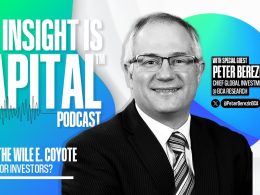Gold Market Radar (February 11, 2013)
For the week, spot gold closed at $1,667.20, down $0.25 per ounce, or 0.01 percent. Gold stocks, as measured by the NYSE Arca Gold Miners Index, gained 0.43 percent. The U.S. Trade-Weighted Dollar Index gained 1.42 percent for the week.
Strengths
- One more stroke in the column for “Peak Gold” production this past week with Peru’s Minister of Energy and Mines reporting that gold production was down nearly 3 percent for 2012. Platinum is also getting traction now with trading taking the price to a 16-month high on concerns that strikes and spiraling operating costs in South Africa will restrict supply. South Africa is the world’s largest platinum producer accounting for 73 percent of global output.
- Mainland China’s gold imports from Hong Kong increased 94 percent to a record 834 million tons per annum in 2012. This data coupled with recent strong volumes on the Shanghai Gold Exchange reinforce the robust demand story in China. With volatility so low, the Chicago Mercantile Exchange announced this week that margin requirements on gold, copper, silver, and platinum futures will be lowered as of the close on February 12. Cash posting for gold futures are set to be lowered by 10 percent.
- Silver Wheaton announced an updated 2013 production guidance of 33.5 million ounces of silver equivalent including 145,000 ounces of gold. The company forecasts 2017 production to reach 53 million ounces of silver equivalent, an 80 percent increase over 2012 production. This news come on the back of Silver Wheaton’s recent $1.9B acquisition of 25 percent of life-of-mine production from Vale’s Salobo mine, and 70 percent of 20-year streams from some of Vale’s Sudbury mine complex.
Weaknesses
- Australian Treasurer Wayne Swan reluctantly announced that Australia raised only $131 million in tax revenue during the second half of 2012 through its Mineral Resource Rent Tax (MRRT). The country’s Treasury had forecasted the tax would raise over $3.0 billion over the full fiscal year ending June 2013.
- The General Mining Act of 1872 was enacted to encourage development of the frontier enabled gold prospectors to remove precious metals and other minerals from U.S. lands without paying royalties. Opponents of this policy regularly lobby the public that this policy allows highly profitable mining companies to extract these minerals for free. Environmentalists stress these resources are the property of every American and that imposing royalties would raise billions of dollars for the government. However, as in the recent example above involving Australia, very little money was brought in and, as we have observed, governments tend to lean towards imposing too high of a royalty and thus the minerals stay in ground with no economic benefits captured.
- George Topping and David Hove from Stifel Nicolaus dug deeper into the all-in cash costs measure suggested by the World Gold Council that would vastly understate the cost of gold production at around $1,100. Realistically, the four senior gold producers real total cost of production is closer to $1,800. We commented previously on Newmont’s gold production decrease from 7.5 million ounces to 4.98 million ounces over 10 years despite spending $16 billion in capex. Topping noted the picture was not any better for Barrick Gold according to the report; over the last six years Barrick’s gold production declined 15 percent to 7.3 million ounces, all this while spending $20 billion in capex. He is completely right in pointing out that if a company is not increasing production then all capital expenditures must be considered sustaining capital expenditures. We are in agreement that if you do not measure your costs, you will not get an improvement in your performance.
Opportunities
- According to Bank Credit Analyst (BCA) research, the gold equity selloff represents a nadir in investor sentiment, typical of major bottoms. Gold equities are trading back at 2007 levels while bullion prices have increased two-fold since 2007.
- BCA notes that money flows have largely been channeled to physical gold ETFs and have bypassed gold mining stocks in this cycle, thus the major gold stock indexes have underperformed. BCA suggest that in addition, during periods of extreme risk aversion the appetite for bullion is simply greater. However, BCA believes 2013 will likely be dominated by decreasing “tail risk” which makes a strong case for a rerating of individual gold mining stocks versus buying bullion.
- Investor disappointment by generalists over the last few years in the senior gold mining companies has left many gold equities under owned and cheap. Six gold mining CEOs lost their jobs last year in shakeups that are usually an indication of significant shifts in corporate strategy according to BCA.
Threats
- Fred Hickey, editor of The High-Tech Strategist, noted in his most recent issue “Up It Goes, Until It Blows – Round 3” that the Dow Jones Industrial Average had its biggest January gain in 19 years. Investor bullishness is approaching levels seen in 2007 and the CBOE Volatility Index is near multiyear lows.
- Hickey eloquently captures the enthusiasm of the market towards an investment in bullion at this point in the cycle. “Gold? We don’t need no stinkin’ gold. You only need that when there’s fear.” After all, Goldman Sachs just last month forecast a gold price of $1,200 an ounce by 2018 and Credit Suisse analyst Tom Kendall stated that he believes it is highly likely we have seen the absolute high in gold prices.
- Hickey in his previous 25 years of newsletters noted he had only used the title “Up It Goes, Until It Blows” in two prior issues. The first time was in December 1999, when the Fed was vigorously pumping money into the system as Y2K approached. Nasdaq peaked in March at 5,000 and that was the end of the “Tech Bubble.” In reaction to that the Fed began a process of slashing interest rates, driving up real estate and market prices to levels that were delusional. This prompted Fred to pin a second essay “Up It Goes, Until It Blows (Again)” in June 2007. Investors then found out what a credit crisis felt like with all that debt on the books. Incidentally, the debt has not gone away and the Fed has now embarked on unlimited quantitative easing.












